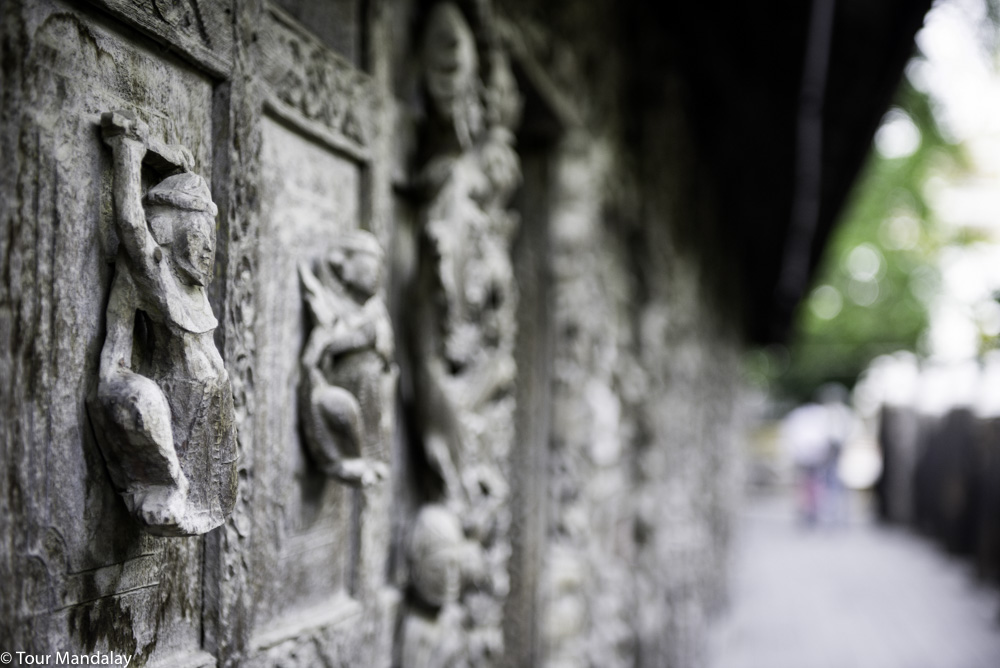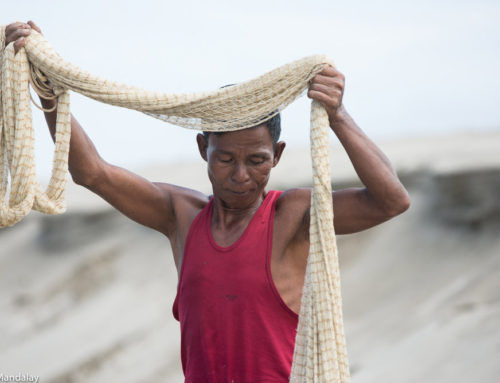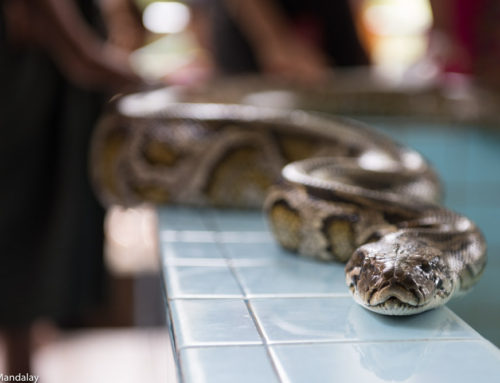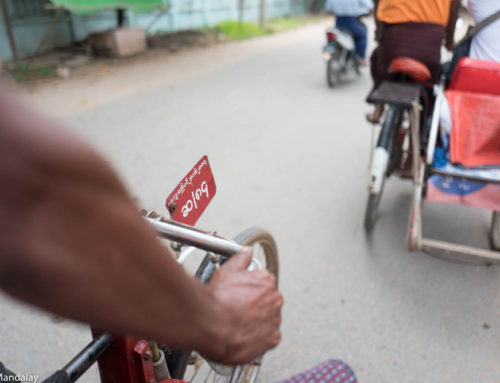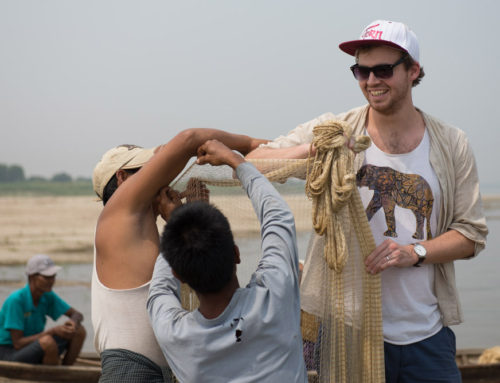MANDALAY AND MINGUN
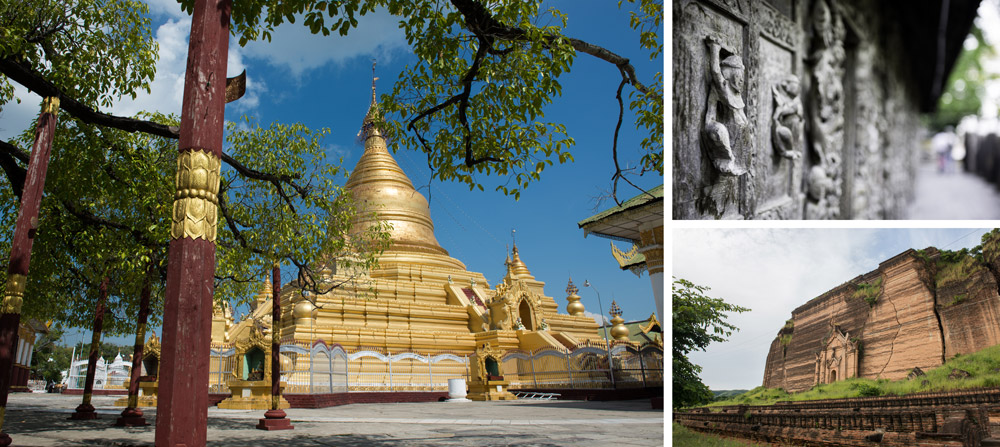
![]() OVERVIEW
OVERVIEW
Having been heavily bombed by the Japanese in 1942, and later again by the allied forces in 1945, little remains of old Mandalay, but that’s certainly not to say a visit here should be written off. It has risen from the ashes to become a young, lively and vibrant city, famous for its culture, education and arts. In stark contrast, opposite Mandalay on the west bank of the Irrawaddy River, you’ll find Mingun, a small town for which King Bodawpaya had grand aspirations. Over the course of a full day, we’ll explore both destinations using a variety of transportation methods.
![]() PACE
PACE
Medium
![]() TOUR PERIOD
TOUR PERIOD
Full day
![]() HIGHLIGHTS
HIGHLIGHTS
- Explore Mandalay’s Thaye Zay Station Bazaar, a pop-up market that runs its stalls based around the time schedule of the passing trains.
- Take a rickshaw via Mandalay’s iconic Palace Walls to Golden Palace Monastery.
- Visit Kuthodaw Pagoda, home of the world’s largest book.
- Take a short boat ride across the Irrawaddy to explore Mingun Pahtodawgyi and a 90-tonne bronze bell.
![]()
ITINERARY IN DETAIL
(Click to read)
Start your exploration of the city with a trip to one of Mandalay’s bustling local markets, a great way to naturally cross paths with the city’s local residents as they go about their daily food shop. One thing that makes this market different is that the sellers are required to pack up their stalls every so often to make way for passing trains – as with most things in Myanmar, the schedule is extremely unpredictable so we won’t be able to guarantee you’ll see this spectacle on the actual day. From here we’ll then hop into a rickshaw to the Golden Palace Monastery, passing by the iconic Mandalay Palace walls and some of its 48 bastions en route. As a result of careless bombing by the Allied forces during WW2, most of the palace (with the exception of the watch tower and royal mint) was reduced to ashes, with the grounds now being used by Myanmar’s military. A reconstruction of the palace was built in 1989, but due to lack of funding and poor maintenance, it is not an attraction we proactively recommend.
The Golden Palace Monastery, or Shwenandaw as it’s also known, was built in 1878 by the last monarch of Myanmar, King Thibaw. Previously it served as the apartment of King Mindon (King Thibaw’s father), but due to Thibaw believing the building was haunted by his father’s spirit, he had it moved and converted into a monastery. Thanks to this decision, the building survived the heavy bombing and is the only building of the original Royal Palace that still stands today. Although the colour from the gold gilding has mostly faded, the intricate teak carvings and glass mosaics provide an immediate reminder of how grand this monastery, and the original Royal Palace, once would have been.
From here we’ll then take a short drive to Kuthodaw Pagoda, home to the world’s largest book. Built by King Mindon (as you’ve correctly assumed, an important figure in Myanmar’s history), the main stupa is surrounded by 729 stone slabs, inscribed on both sides with a page of text from the Tipitaka (the entire Pali Canon of Theravada Buddhism). Sadly, the complex you see today is just a shadow of its former self, no thanks to British soldiers stripping it of its most valuable materials shortly after the annexation of Mandalay in 1885. From top to bottom, the pagoda stood bare for just over a decade.
For lunch, we’d like to recommend Daung Lann Gyi, a Burmese restaurant that serves its dishes on large, drum-like circular trays. Before tables and chairs, Myanmar people would sit around trays such as these with friends and family, pile on top a mountain of food (salads, rice, curries, soup, or whatever they could get hold of) and eat using only their hands. With nothing to separate the food, it was common for the items to mix together, with the soup usually being left until the very end. Nowadays, the dishes are separated by smaller bowls and come with spoons for serving, but the communal feel of the experience is still the same.
NOTE: Daung Lann Gyi is a recommendation only and the cost of lunch not included. If you would prefer to eat at a different restaurant, please let the guide know – the car and driver are at your disposal.
As soon as your lunch has settled, take a short drive to Mandalay’s jetty to board a private river boat to Mingun, a small town famous for its ginormous temple ruins (Mingun Pahtodawgyi) and a 90-tonne bronze bell.
Construction of Mingun Pahtodawgyi began in 1790, with King Bodawpaya aiming for it to be the tallest in the world at 150-metres. On the back of an astrologer’s advice, the King halted the build in the belief that he would die if it was ever finished – seeing as he lived until the grand old age of 74 (a remarkable feat at the time), superstition clearly worked in his favour. Even if permission to complete the design was given, it is likely the state of the temple would be similar to that of today. In 1839, a strong earthquake rattled the structure so intensely it left huge cracks along the walls and parts of the corners collapsed – it even toppled the two lion statues whose job was to keep watch over and protect the temple.
Equally as grand is the 13-foot tall bronze bell that can be found nearby. As per above, weighing 90-tonnes, it has been recorded as the heaviest functioning bell in the world at several times in history. It’s also claimed to be the largest functioning bell in the world, although it doesn’t have a clanger and is instead rang by striking the outer edge. On the bell you will notice five identical squiggles (almost resembling the numerical digit nine); this is how you write number five in Myanmar language and it indicates that the bell weighs 55,555 vis, a number that is likely to have greatly appealed to King Bodawpaya’s superstitious mind-set.
We’ll conclude our tour of Mingun at Hsinbyume Pagoda, an architecturally unique monument that’s a favourite with photo enthusiasts looking to capture images of novice monks circling around its wavelike base – these images regularly featured in Myanmar travel-related promotional material. Even though we can’t guarantee any monks will be around, it is still a very interesting site to visit. Built in 1816 by King Bagyidaw, it is dedicated to the memory of his first consort and cousin. The design is said to have been inspired by the mythical Sulamani pagoda on Mount Meru, with the seven wavelike terraces representing the seven mountain ranges that lead to the summit.
Should time permit, take a short break at a local teashop before returning back to Mandalay by boat. Transfer from the jetty to your hotel (or a destination of your choosing) by car.
![]()
INCLUSIONS
- Transportation to/from hotel in an air-conditioned vehicle
- All entrance and zone fees
- Private return boat transfer from Mandalay to Mingun
- English speaking tour guide (for other languages, please enquire)
- Drinking water and hand towel
![]()
EXCLUSIONS
- Any meals
- Drinks at Mingun tea shop
- Any services not mentioned
![]() NOTES
NOTES
- You will be expected to remove your shoes when entering temples – wearing footwear that is easy to take on / off is highly recommended.
- A supplementary fee may apply on certain days – Tour Mandalay will inform you of this beforehand.
![]() PRINT
PRINT
![]() LOCATION
LOCATION

